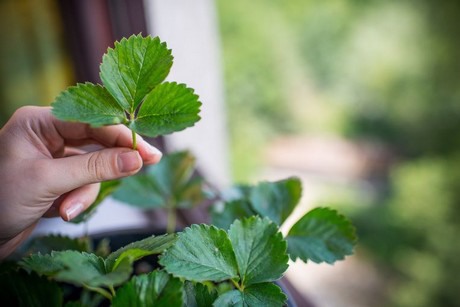There is a citizen science project called AIRbezen that has made its way into Europe. People in six different countries are going to map air pollution in their cities. They are also going to try a find a link between how dirty the air and how much green space there is. This will be done under the guidance of the University of Antwerp in Belgium.

The idea for AIRbezen came to Prof. Roeland Samson in 2014. He is a bio-engineer at the University of Antwerp. Using strawberry plants, traffic-related air pollution was mapped. More than 1,000 people living in Antwerp took part in this first campaign. It was a big success, moving air quality high up on the Belgian (political) agenda.
The project quickly gained momentum. There were, among other things, AIRbezen@school education campaigns in 2015 and 2019. The Dutch town of Drimmelen and Zaragossa in Spain provided huge amounts of strawberry plants. The largest AIRbezen project to date was in 2017. Then, more than 10,000 people took part in the Province of East Flanders in Belgium.
Rate of pollination too
Strawberry plants will now take over the rest of Europe. This will be done as part of the European BIOVEINS project. Seven research facilities in six countries are joining hands. These countries are Belgium, Estonia, France, Poland, Portugal, and Switzerland. This cooperation was formed under the direction of the University of Antwerp.
The participating cities in these countries include Antwerp. These cities were primarily selected based on their location. They are located on a north-east to south-west gradient throughout Europe. They are also found in different climate zones.
“We are going to do a new follow-up study of traffic-related air quality in urban areas. We will use strawberry plants. These will be cared for by 50 volunteers per city," explains Prof. Roeland Samson. “However, there is also a new aspect. We will, at the same time, investigate how successfully these plants get pollinated in cities. We are using a different plant for this - the trefoil."
Common trefoil
The analysis of the results should enable scientists to link air pollution to the amount of green space in the surrounding area. Samson says, “We are trying to get an answer for, for example, the question of how big a city park should be to be efficient and to influence a city's climate. Is it about larger parks with lots of trees? Or will a smaller area with grass, certain types of plants, and some shrubs that attract bees, do?"
"Each participant will get a strawberry and a trefoil plant. They must care for these plants in the spring and summer of 2019. The participants must carefully monitor the number, size, and shape of the strawberries. They must also collect the trefoil's pods. They must then pass this information on via the relevant website. The collected pods and leaves must then be brought to the University of Antwerp, where they will be analyzed," the professor continues.
"Results are expected in November of this year. Everyone who showed interest in the project will be kept in the loop. The participants will receive information about their specific plants. This information will be in relation to their home town and the other participating countries," concludes Prof. Samson.
Source: The University of Antwerp
